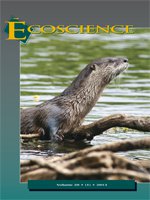During the breeding season, seabird colonies are attended by active breeders, failed breeders, and non-breeding birds. Determining breeding status of some seabirds can be challenging, but tracking non-breeder attendance can provide important information on the health of the colony or the local marine environment. We used behavioural and energetic data to distinguish between breeding and non-breeding northern fulmars (Fulmarus glacialis) at a colony in the Canadian High Arctic, a region where global warming is rapidly changing the marine environment in which these birds feed. Breeding fulmars could be distinguished from non-breeders based on their larger fat reserves, although body mass and morphometrics taken in the field were not sufficient to distinguish breeding classes reliably. Behavioural cues also signaled fulmar breeding status, but observing these cues required a considerable amount of observation time. As environmental conditions in the Arctic continue to change, monitoring and population modeling efforts will require detailed observation periods rather than rapid assessments to reliably assess proportions of non-breeding fulmars at Arctic colonies.
How to translate text using browser tools
1 March 2013
Behavioural and Energetic Constraints of Reproduction: Distinguishing Breeding from Non-Breeding Northern Fulmars at Their Colony
Mark L. Mallory,
Mark R. Forbes
ACCESS THE FULL ARTICLE

Ecoscience
Vol. 20 • No. 1
March 2013
Vol. 20 • No. 1
March 2013
Arctic
Arctique
energetics
énergétique
fulmar boréal
Fulmarus glacialis
Fulmarus glacialis




